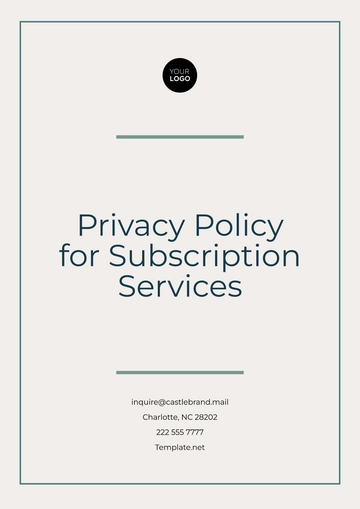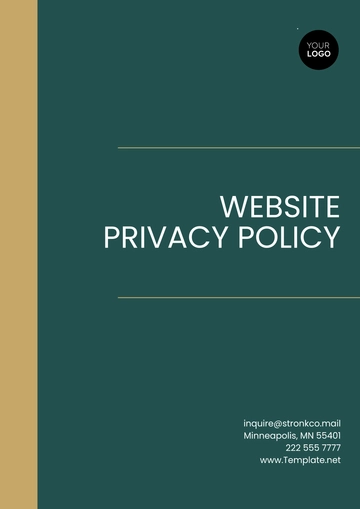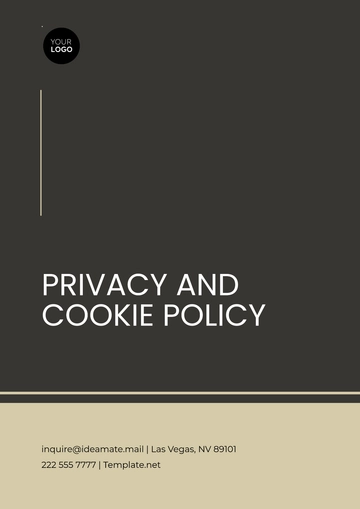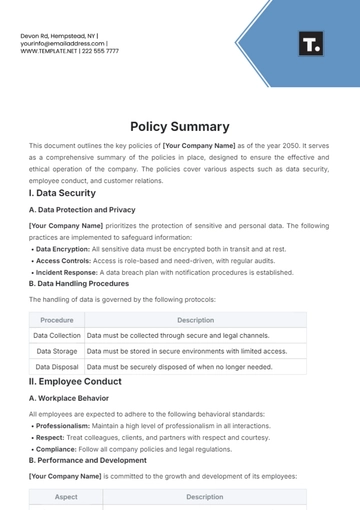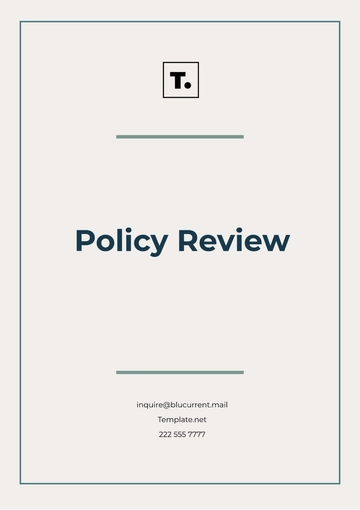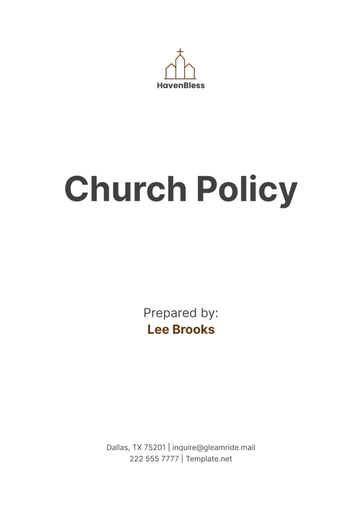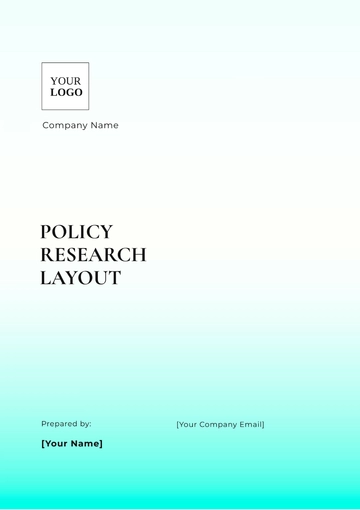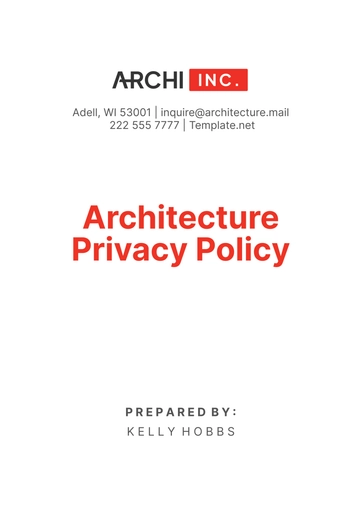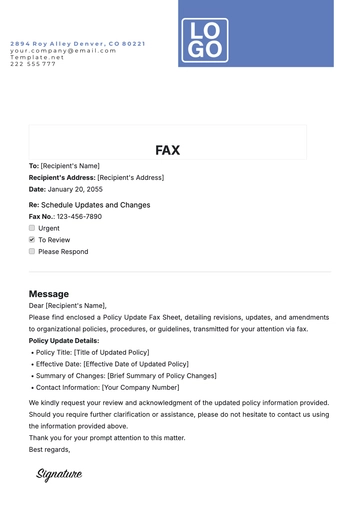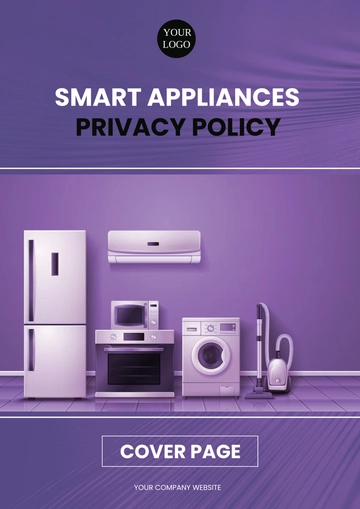Free Pet Care Policy
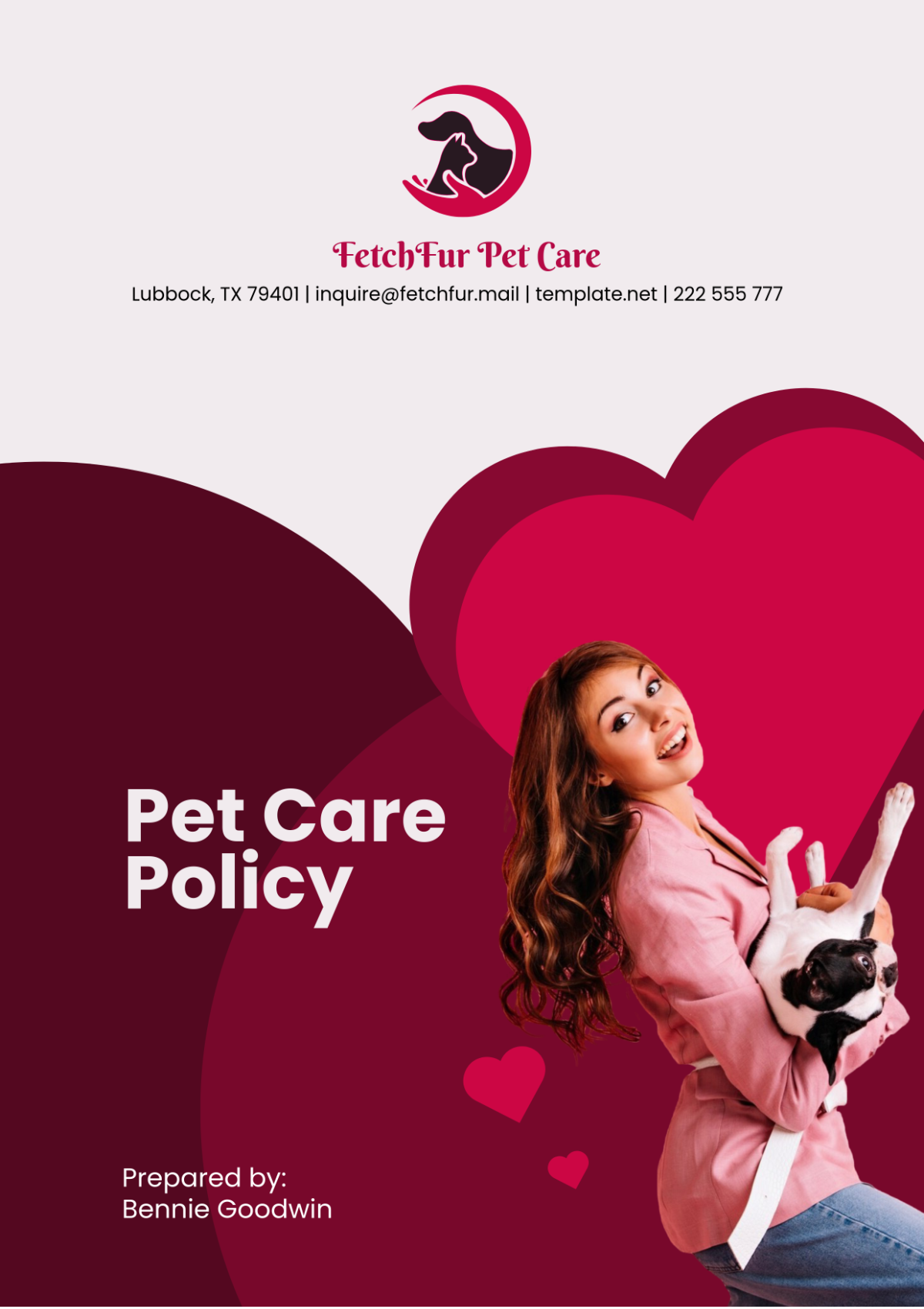
I. Purpose and Scope
A. Purpose
The purpose of the Pet Care Policy at [Your Company Name] is to provide a structured approach for pet owners within the company, while ensuring a safe, healthy, and efficient working environment for all employees. The policy aims to support employees who wish to have their pets with them in the workplace, thus enhancing the work culture. In doing so, we ensure that the presence of pets does not cause disruptions or discomfort for others. Our goal is to create a pet-friendly, yet professional workspace where pets and employees coexist harmoniously. Furthermore, the policy is designed to encourage responsible pet ownership, ensuring the health and safety of both the animals and humans within the company environment.
B. Scope
This policy applies to all employees at [Your Company Name] who wish to bring their pets to the workplace, including full-time, part-time, and temporary staff. The policy outlines clear guidelines for pet eligibility, health and safety standards, and behavioral expectations. It also applies to contractors, visitors, and anyone who interacts with pets within the workplace. The guidelines will also serve as a framework for the introduction of any new pet-related programs, pet care support, or changes in workspace regulations. This policy will be reviewed regularly to ensure it remains relevant and aligned with any changes in workplace operations, legal requirements, or pet care practices.
II. Definitions
Pet: A pet, as defined within this policy, refers to a domesticated animal, typically a dog or cat, that an employee has registered with [Your Company Name] and is authorized to bring into designated pet-friendly areas within the workplace.
Pet Owner: Any employee who is registered as the primary caregiver of a pet that has been approved by the company to enter the workplace. Pet owners are responsible for ensuring their pets meet health and behavior standards set by the company.
Pet-Friendly Area: Specific areas within the company’s facilities where pets are allowed, as designated by [Your Company Name]. These areas have been carefully selected based on factors such as space, employee interaction, and pet safety.
Restricted Area: Locations within the workplace where pets are prohibited due to safety, hygiene, or operational concerns. These areas include certain offices, laboratories, kitchens, and meeting rooms.
III. Pet Eligibility and Registration
A. Eligible Pets
Eligible pets for the workplace are primarily dogs and cats, as these species are commonly domesticated and more easily integrated into office environments. Other pets, such as small mammals (e.g., rabbits, guinea pigs) or reptiles, may be considered on a case-by-case basis. To be eligible for the workplace, pets must meet specific health and behavior standards, including good socialization, cleanliness, and manageable size. Pets must not be disruptive, dangerous, or excessively noisy. Pet owners must ensure their pets are comfortable in an office environment, interacting calmly with other employees and pets.
1. Dog and Cat Size Restrictions
For dogs, weight restrictions apply to ensure pets are manageable within the workspace. Dogs over [50 lbs] may be restricted to outdoor areas or specific larger spaces with approval from HR. Cats should be kept in carriers when moving through shared areas, and they should be accustomed to being in confined spaces, especially in a bustling office.
B. Registration Process
To bring a pet to work, employees must complete a formal registration process through [Your Company Name]’s Human Resources (HR) department. This ensures pets are compliant with health and safety standards and helps maintain workplace hygiene and safety. All pets must be approved before they are allowed to enter the workplace, and any pets that have not gone through the proper registration process will not be permitted. The process involves providing key documentation such as health certificates, vaccination records, and pet behavior assessments.
1. Registration Form Completion
Pet owners must complete the Pet Registration Form, which includes important details about the pet's breed, age, size, health condition, and behavioral history. This form will also collect emergency contact information in case of pet-related issues, such as illness or injury.
2. Approval Process
Once the registration form is submitted, the HR department will review the pet’s eligibility based on health, size, and behavioral standards. The approval process typically takes between [3-5] business days, but more complex cases may require additional documentation or assessments.
C. Documentation and Requirements
For successful registration, pet owners are required to provide certain documents that help ensure the well-being of both the pet and other employees. These documents include:
Vaccination Records: Proof of up-to-date vaccinations to protect pets and humans from contagious diseases.
Veterinary Health Check: Documentation confirming that the pet has had a health check-up within the last [12 months].
Insurance: Proof of pet liability insurance, where applicable, to cover any potential damage or injury caused by the pet.
IV. Pet Care Standards
A. Health and Well-being Requirements
At [Your Company Name], we prioritize the health and well-being of all pets in the workplace. Pets must be in good health, free of parasites, and appropriately vaccinated to prevent the spread of illness. Pet owners must be proactive in ensuring their pets receive regular veterinary care, including vaccinations, parasite prevention, and routine wellness checks.
1. Annual Checkups
Pet owners must schedule an annual veterinary checkup for their pets and submit updated records to HR. Regular veterinary care is crucial to maintaining pet health and preventing illness that could spread to other pets or humans.
2. Parasite Prevention
Pets must be regularly treated for parasites such as fleas, ticks, and worms. Pet owners are required to provide documentation showing their pets are on an appropriate parasite prevention regimen, including the brand and dosage of medication.
B. Supervision and Safety Protocols
Pet owners are responsible for supervising their pets at all times, both to ensure their pet's safety and the safety of others. Pets should not be left unattended in the workplace, especially in shared areas or near other animals. Owners are expected to manage their pets' behavior, including barking, jumping, and any aggressive tendencies, to prevent distractions and ensure a peaceful office environment.
1. Leash and Containment
To maintain control of pets, particularly dogs, a leash must be used when walking through shared office spaces. Leashes must be kept on at all times unless the pet is in a designated pet-friendly area. Cats must remain in their carriers when moving through office spaces, and small pets must be contained securely to avoid any escape or disruptions.
V. Employee Responsibilities
A. Pet Owner Responsibilities
As a pet owner, employees are expected to take full responsibility for their pet’s behavior and well-being in the workplace. This includes maintaining cleanliness, ensuring their pet follows behavioral standards, and cleaning up after their pet if needed. Pet owners must also ensure their pets are well-behaved and interact respectfully with other employees, pets, and visitors.
1. Supervision and Control
Pet owners must be vigilant in ensuring their pets do not disrupt work activities or interfere with employee interactions. Pet owners should handle situations such as barking, fighting, or territorial behavior promptly and effectively.
2. Cleanliness and Waste Management
Pet owners are responsible for cleaning up after their pets. Pet waste must be disposed of immediately using designated pet waste bags and bins. Pet owners are also responsible for cleaning up any messes their pets may cause, including accidental spills, fur shedding, or damage to company property.
B. Non-Pet Owner Considerations
Employees who do not own pets must be made to feel equally comfortable in the office. [Your Company Name] is committed to maintaining a work environment where all employees feel respected, whether they have pets or not. Efforts will be made to address any concerns from non-pet owners, such as allergies, phobias, or general discomfort with animals.
1. Pet-Free Zones
Designated pet-free zones will be established, and employees who do not wish to interact with pets may request assignments or meetings in these areas. Additionally, employees with allergies or specific concerns will be accommodated through flexible work arrangements, such as allowing them to work remotely when necessary.
VI. Pet-Friendly Workspace Policy
A. Designated Pet-Friendly Areas
Certain areas of the office will be designated as pet-friendly spaces, where employees can bring their pets without concern. These areas will be equipped with pet-friendly amenities, including pet stations with water bowls, treats, and waste bags. Pet owners are encouraged to use these areas for relaxation and socialization during breaks.
1. Indoor and Outdoor Pet Spaces
Pet-friendly areas will include both indoor and outdoor spaces, ensuring that pets have access to fresh air and exercise. Outdoor spaces will be secured and free of any hazards, allowing pets to roam safely. Indoor spaces will be equipped with pet-friendly furniture and sufficient space for pets to move comfortably.
B. Restricted Areas
Some areas of the office, such as kitchens, meeting rooms, laboratories, and private offices, will remain pet-free zones. Pets will not be allowed to enter these areas, as they may pose health, safety, or operational risks. This includes areas where food is prepared, or where sensitive equipment is used.
VII. Health and Safety Measures
A. Vaccination and Health Requirements
To maintain a safe and healthy environment for both employees and pets, [Your Company Name] requires that all pets brought into the workplace meet specific health criteria. The policy ensures that pets are vaccinated against common diseases to prevent the spread of illnesses that could affect the pet population, as well as employees who may have contact with the animals.
1. Core Vaccinations
Pets must be vaccinated for rabies, distemper, parvovirus (for dogs), and feline leukemia (for cats). A certificate from a licensed veterinarian confirming the pet's vaccination status is required. The vaccination certificate must be submitted annually to ensure continued compliance.
2. Ongoing Health Checks
In addition to vaccination requirements, pets must undergo regular veterinary check-ups. These visits help detect any underlying health issues and ensure the pet remains fit and healthy while in the office. [Your Company Name] encourages pet owners to keep their pets on a regular preventive care schedule, including flea, tick, and heartworm treatments, to avoid the spread of parasites within the office space.
3. Infection Prevention
To minimize the risk of transmitting infectious diseases between pets, all employees must ensure their pets are free from any contagious conditions before bringing them to the office. Pets with active infections, such as kennel cough or ringworm, are prohibited from entering the workplace until cleared by a veterinarian.
B. Cleaning and Hygiene
Maintaining a clean and hygienic environment is essential for the safety and comfort of both pets and employees. [Your Company Name] will provide cleaning supplies and ensure that areas where pets are allowed are regularly sanitized.
1. Regular Cleaning Schedules
Designated pet-friendly areas will be cleaned at least once every day to ensure a sanitary environment. This includes the cleaning of pet stations, pet bedding, and any other items that pets may interact with during their time in the office. Pet waste will be collected and disposed of immediately to avoid contamination.
2. Pet Odor Management
Pets, like humans, can produce odors. As part of the cleaning protocols, air purifiers and odor-neutralizing systems will be installed in pet-friendly spaces to ensure a comfortable atmosphere for employees and visitors. Pet owners are also responsible for ensuring their pets do not create an unpleasant environment through excessive odor.
C. Emergency Protocols
While every effort is made to ensure a safe and controlled environment, emergencies can still arise. [Your Company Name] has established protocols for handling any incidents involving pets, whether related to health, behavior, or accidents.
1. Pet Emergency Plan
In case of a pet emergency, such as an injury or health scare, employees should immediately contact their designated emergency contact or the HR department. The company will maintain a list of local veterinary clinics, emergency pet hospitals, and pet behavior specialists to provide quick assistance.
2. Emergency Evacuation Procedure
In the event of an emergency evacuation, such as a fire or natural disaster, pets will be safely escorted to designated exit points. Pet owners are responsible for ensuring their pets are calm and ready to evacuate. Emergency pet evacuation kits will be available in key pet-friendly areas to ensure all necessary items, such as leashes, waste bags, and first aid supplies, are accessible.
3. First Aid Training for Employees
[Your Company Name] will offer basic pet first aid training to employees who work in close proximity to pets. This training will focus on handling common injuries, choking hazards, and health emergencies until professional help arrives.
VIII. Code of Conduct for Pets
A. Behavior Standards
All pets brought into the workplace must adhere to a specific code of conduct to ensure a peaceful and productive office environment. [Your Company Name] expects that pets behave in a way that is respectful to other employees, pets, and visitors.
1. Socialization with Employees
Pets must be friendly and approachable toward employees and visitors, both human and animal. Aggressive behavior, such as growling, biting, or excessive barking, is not acceptable and may result in the pet being removed from the premises. Pet owners should monitor their pets closely and intervene if their pet shows signs of aggression.
2. Pet Play and Interaction
While pets are allowed to socialize with each other, rough play or disruptive behavior in shared spaces is prohibited. Pets should be calm and well-behaved when interacting with other animals. Pet owners are responsible for ensuring their pets engage in appropriate behavior when around other pets.
B. Incident and Escalation Process
In the event of an incident involving a pet, such as injury, aggression, or disruption, the following process will be followed:
1. Immediate Action
The pet owner will be immediately informed, and they must take responsibility for addressing the issue. If necessary, the pet will be removed from the premises to prevent further disruptions or risks. The HR department will assist in managing the situation and ensuring the safety of all involved parties.
2. Incident Report
An incident report will be filed, documenting the nature of the incident, the parties involved, and any actions taken. This report will be reviewed by HR to determine if further action is required, such as additional training for the pet or temporary suspension from the workplace.
3. Escalation and Disciplinary Action
If the incident is severe or if it involves repeated behavior violations, disciplinary action may be taken against the pet owner. This could include suspension from bringing the pet into the office, mandatory behavior training for the pet, or, in extreme cases, removal of the pet from the program altogether.
IX. Violations and Penalties
A. Types of Violations
To ensure that the pet-friendly policy is adhered to, [Your Company Name] has established clear penalties for violations. The types of violations include:
1. Health and Safety Violations
These include bringing a pet to the workplace without the proper vaccinations, failing to provide necessary health documentation, or failing to meet hygiene requirements.
2. Behavioral Violations
Behavioral violations may include pets that exhibit aggression, excessive barking, or destruction of property. Any behavior that disrupts the work environment or puts other employees at risk will not be tolerated.
3. Non-compliance with Workplace Policies
This includes failing to register a pet, bringing unauthorized pets into the office, or not following designated pet-friendly area rules.
B. Disciplinary Measures
Penalties for violating the Pet Care Policy will be determined on a case-by-case basis, depending on the severity of the violation. Possible disciplinary actions include:
1. Verbal and Written Warnings
For minor violations, such as not cleaning up after a pet or slight disruption caused by the pet, a verbal warning may be issued. If the issue persists, a written warning will be provided.
2. Temporary Suspension of Pet Privileges
For more serious violations, the pet owner may be temporarily suspended from bringing their pet into the workplace. The length of the suspension will depend on the nature of the violation, and during this time, the pet owner may need to make alternative arrangements for pet care.
3. Removal of Pet from Workplace Program
In extreme cases, such as continuous aggressive behavior, health risks to other employees or pets, or consistent disregard for the policy, the pet may be permanently removed from the workplace program. This decision will be made after a thorough review by HR, and the employee will be notified of the outcome.
X. Review and Policy Changes
A. Policy Review Process
To ensure that the Pet Care Policy is effective, relevant, and aligned with the needs of the workplace, [Your Company Name] will conduct an annual review starting in [2052].
The review will evaluate:
Employee satisfaction with the policy and its impact on workplace morale
The health and safety of pets in the office
Any changes in legal regulations that affect pet care in workplaces
New best practices in pet care and workplace pet-friendly programs
Feedback from employees will be gathered through surveys, focus groups, and individual interviews, ensuring that the policy is responsive to any issues that arise.
B. Policy Change Notification
If significant changes are made to the policy, all employees will be notified through official communication channels. Updates will be shared via email and posted on the company intranet at least [30] days before implementation. Employees will be encouraged to provide feedback on proposed changes to ensure that they reflect the best interests of both pets and employees.
XI. Employee Pet Care Support Program
A. Pet Care Assistance
To support employees in maintaining the health and well-being of their pets, [Your Company Name] offers the Pet Care Assistance Program. The program includes:
Financial Assistance: Employees can receive up to [$500] annually for pet-related expenses, including veterinary care, pet grooming, and pet training.
Access to Veterinary Care: Employees will have access to discounted or free veterinary consultations through [Your Company Name]’s network of trusted veterinary professionals.
Pet Wellness Workshops: Monthly workshops and seminars on pet health, nutrition, and training will be available to all employees.
B. Pet Wellness and Employee Engagement
As part of the company’s commitment to a healthy workplace, [Your Company Name] will organize regular pet wellness activities. These include pet exercise sessions, group walks, and other team-building events centered around pets. These activities promote physical health, reduce stress, and foster positive relationships between employees and their pets.
- 100% Customizable, free editor
- Access 1 Million+ Templates, photo’s & graphics
- Download or share as a template
- Click and replace photos, graphics, text, backgrounds
- Resize, crop, AI write & more
- Access advanced editor
Set clear expectations with the Pet Care Policy Template from Template.net. This editable and customizable policy template defines your pet care procedures, rules, and guidelines. Easily modify it using our Ai Editor Tool to suit your pet care business.
You may also like
- HR Policy
- Restaurant Policy
- Company Policy
- Accounting Policies and Procedures
- Website Policy
- Privacy Policy
- Safety Policy
- School Policy
- IT and Software Policy
- Law Firm Policy
- Construction Policy
- Interior Design Policy
- Travel Agency Policy
- Education Academic Policy
- Security Policy
- Real Estate Policy
- Expense Policy
- Software Policy



